Welcome to our latest blog post on “Creating a Colorful Balcony Garden with Portulaca Varieties.” If you’re seeking to transform your balcony into a vibrant oasis of beauty and tranquility, you’ve come to the right place. Portulaca, with its stunning array of hues and textures, offers a plethora of options to breathe life into your outdoor space.
In this comprehensive guide, we’ll walk you through the steps to design, cultivate, and care for a thriving balcony garden adorned with a delightful selection of Portulaca varieties. Let’s embark on this floral journey and create a captivating and joyful haven right at your doorstep.
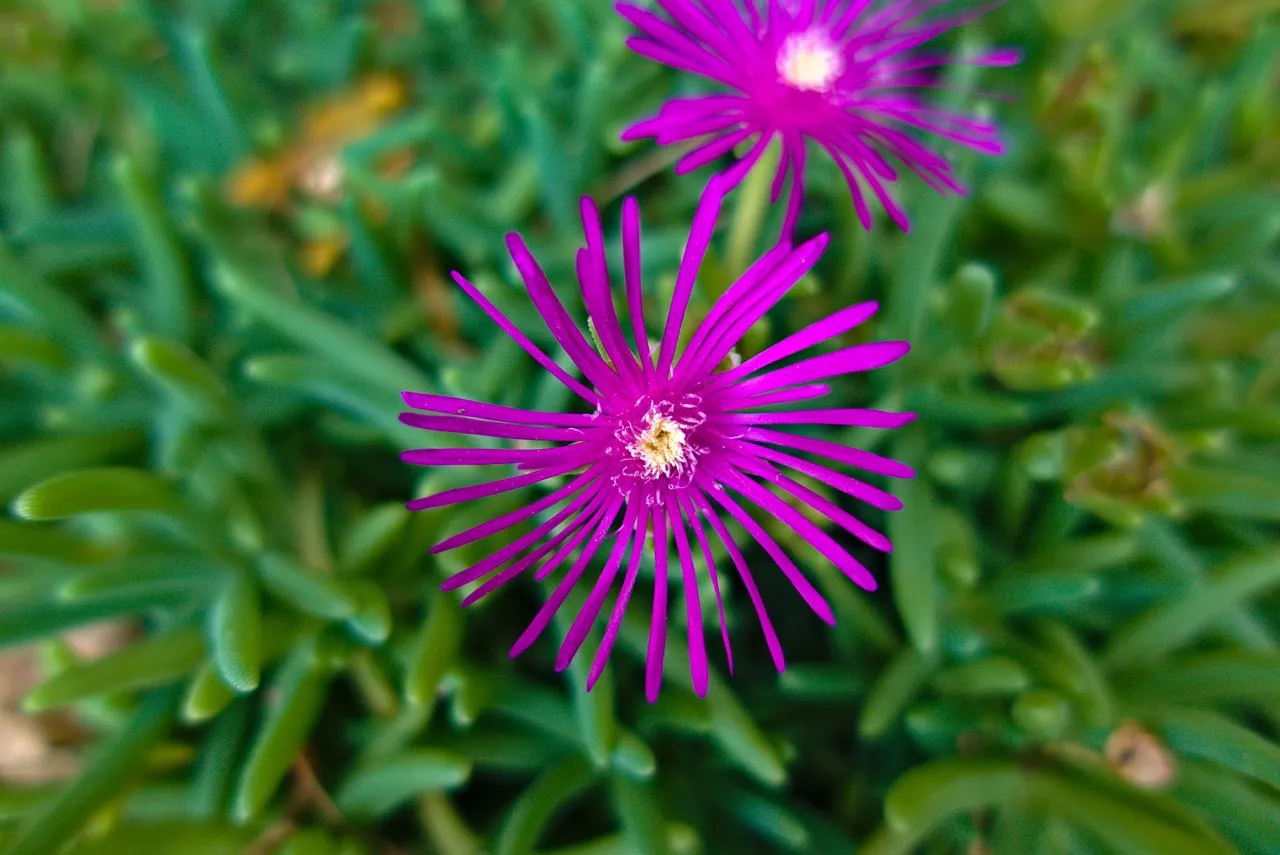
Types of Portulaca:
Portulaca grandiflora:
Portulaca grandiflora, commonly known as Moss Rose or Purslane, is a delightful and popular choice for creating a colorful balcony garden. Its wide range of brilliant colors, including shades of pink, orange, yellow, red, and white, adds a stunning visual appeal to any outdoor space. The compact and trailing growth habit of Portulaca grandiflora makes it ideal for containers, hanging baskets, or even cascading over edges of raised planters. This versatility allows gardeners to experiment with different arrangements and create eye-catching displays.
Portulaca grandiflora thrives in sunny locations with well-draining soil, making it an excellent choice for balcony gardens exposed to ample sunlight. As a drought-tolerant succulent, it requires minimal water once established, making it suitable for regions with hot and dry climates. Its low-maintenance nature and ability to withstand neglect make it an ideal plant for busy gardeners or those new to gardening.
Portulaca oleracea:
Portulaca oleracea, also known as Common Purslane or Pigweed, is an edible variety of Portulaca that offers both aesthetic and culinary benefits in a balcony garden. Its succulent and fleshy leaves, along with its bright yellow flowers, add a unique touch to any green space. As an edible plant, Portulaca oleracea can be a valuable addition to your balcony, allowing you to harvest fresh and nutritious greens for your culinary creations.
In addition to its culinary uses, Portulaca oleracea is known for its adaptability and resilience. It can thrive in poor soil conditions and requires minimal water, making it a hardy and low-maintenance choice for balcony gardens. With proper care, this variety of Portulaca can self-seed, providing a continuous supply of fresh leaves and flowers throughout the growing season.
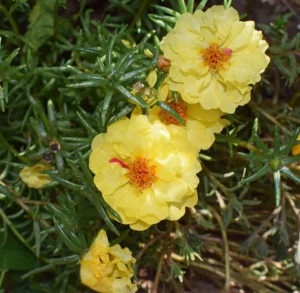
Portulaca umbraticola:
Portulaca umbraticola, commonly known as Wingpod Purslane or Sun Purslane, offers a slightly different aesthetic appeal compared to other Portulaca varieties. It features small, colorful flowers in shades of pink, orange, yellow, or white, and its growth habit is more upright compared to the trailing nature of other Portulaca species. This vertical growth makes it suitable for planting in borders or mixed flower beds, adding height and interest to your balcony garden.
Portulaca umbraticola shares the drought-tolerant and low-maintenance characteristics of its counterparts, making it a perfect addition to a vibrant and flourishing balcony garden. It loves basking in the sunlight, so placing it in a sunny spot on your balcony will encourage optimal growth and blooming. With its unique flowers and versatile growth habit, Portulaca umbraticola adds a touch of charm and elegance to any outdoor space.
Portulaca pilosa:
Portulaca pilosa, commonly known as Kiss Me Quick or Pink Purslane, is a delightful Portulaca variety that showcases dainty pink flowers. Its petite and charming blooms make it an attractive choice for adding delicate accents to your balcony garden. With its trailing and slightly cascading growth habit, Portulaca pilosa is well-suited for hanging baskets, window boxes, or rock gardens.
Similar to other Portulaca species, Portulaca pilosa is drought-tolerant and prefers well-draining soil. Its ability to thrive in challenging conditions makes it an excellent candidate for balcony gardens in hot and arid climates. Pairing it with other colorful flowers or complementary succulents can create a visually appealing and harmonious composition. With Portulaca pilosa, you can infuse a touch of elegance and grace into your balcony oasis.
The Charm of Portulaca Varieties: A Colorful Balcony Delight
Portulaca varieties are a true delight for any balcony garden, offering a stunning array of colors and textures that instantly elevate the visual appeal of your outdoor space. From the vibrant hues of Portulaca grandiflora, also known as Moss Rose, to the delicate charm of Portulaca pilosa, or Kiss Me Quick, each variety brings its unique beauty to the garden. These low-growing, trailing plants create a lush carpet of flowers that cascade gracefully over containers and hanging baskets, creating a lush and inviting ambiance on your balcony. Whether you prefer a monochromatic display or a vibrant mix of colors, Portulaca varieties are sure to enchant and captivate you with their blooming splendor.
Selecting the Perfect Pot: Container Gardening with Portulaca
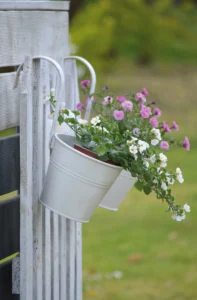
Choosing the right pots for your Portulaca garden is essential for ensuring the health and vitality of these colorful beauties. Opt for containers with good drainage to prevent waterlogged soil, as Portulaca thrives in well-draining conditions. Consider using terracotta pots or lightweight plastic containers that are easy to move around and provide a stable environment for the plants. The size of the pot should accommodate the spreading growth habit of Portulaca, allowing it to trail gracefully over the edges. Additionally, select pots that complement the overall aesthetic of your balcony, enhancing the beauty of your Portulaca display.
Portulaca Planting Tips: Creating a Lively Balcony Display
When planting Portulaca, prepare the soil with a well-balanced potting mix that provides essential nutrients while allowing excess water to drain freely. Ensure the selected location receives full sunlight, as Portulaca varieties thrive in bright and sunny conditions. Gently transplant the seedlings or young plants into the prepared pots, taking care not to disturb their delicate roots. Space the plants adequately to allow them room to spread and grow freely. Water the newly planted Portulaca thoroughly, and continue to keep the soil evenly moist during the establishment phase. With proper planting techniques, you’ll lay the foundation for a lively and colorful balcony display that will flourish throughout the season.
Sunny Secrets: Meeting Portulaca’s Sunlight Needs on Your Balcony
Portulaca varieties are sun-loving plants that crave ample sunlight to produce their vibrant blooms. Ensure your balcony receives at least six to eight hours of direct sunlight daily to promote optimal growth and flowering. Choose a location that faces south or west, providing the plants with the maximum amount of sunlight throughout the day. If your balcony has limited sunlight, consider using reflective surfaces or mirrors to redirect sunlight towards your Portulaca garden. By meeting Portulaca’s sunlight needs, you’ll ensure a bountiful and colorful display that brightens up your balcony and brings joy to your outdoor space.
Thriving in Minimal Care: Low-Maintenance Portulaca Varieties
One of the greatest advantages of Portulaca varieties is their ability to thrive in minimal care conditions. These hardy plants are drought-tolerant, making them well-suited for regions with hot and dry climates. Once established, Portulaca requires infrequent watering, as overwatering can lead to root rot. The low-maintenance nature of Portulaca makes it a perfect choice for busy gardeners or those new to gardening. Additionally, these plants are relatively pest and disease resistant, further reducing the need for intensive care. By choosing Portulaca for your balcony garden, you’ll enjoy a vibrant and flourishing display with minimal effort.
Portulaca Watering Guide: Balancing Moisture for Blooming Success

Watering Portulaca correctly is essential for its blooming success and overall health. While these plants are drought-tolerant, they still require regular watering to support their vibrant flowers. Allow the top inch of soil to dry out before watering, and then water thoroughly to ensure the moisture reaches the roots. Overwatering should be avoided, as it can lead to root rot and other moisture-related issues. During hot summer days, water in the early morning or late evening to prevent rapid evaporation. Consistent and balanced watering is the key to a blooming success and a colorful Portulaca garden on your balcony.
Feeding Your Portulaca: Fertilization Tips for Abundant Flowers
To encourage abundant flowering and vigorous growth, regular fertilization is essential for your Portulaca garden. You should choose a balanced, slow-release liquid or granular fertilizer specially produced for flowering plants. Apply the fertilizer as per the manufacturer’s instructions, typically during the active growing season. Be cautious not to overfertilize, as excessive nitrogen can lead to excessive foliage growth at the expense of flowers. Organic fertilizers, such as compost or well-rotted manure, can also be incorporated into the soil to enrich it naturally. Proper feeding ensures that your Portulaca varieties have the necessary nutrients for a continuous and colorful display on your balcony.
Propagating Portulaca: Growing New Plants with Ease
Propagating Portulaca is a rewarding and straightforward process, allowing you to grow new plants from existing ones and expand your colorful balcony garden. One of the most common methods of propagation is through stem cuttings. To do this, select healthy and non-flowering stems, and cut them just below a leaf node. Remove any leaves from the lower part of the cutting, and dip the cut end in a rooting hormone to stimulate root growth. Plant the cuttings in a well-draining potting mix and keep the soil consistently moist until roots develop. Another propagation method is by collecting and sowing seeds, which can be done after the flowering season. With a little patience and care, you’ll have a bounty of new Portulaca plants to enrich your balcony garden.
Pruning for Perfection: Enhancing Portulaca’s Growth and Beauty

Pruning Portulaca is not always necessary, but it can be beneficial for enhancing the plants’ growth and beauty. Removing faded flowers, also known as deadheading, promotes continuous blooming by preventing seed formation. This redirects the plant’s energy towards producing more flowers, ensuring a vibrant and colorful display. If you notice any leggy or overgrown stems, trimming them back can encourage bushier growth. However, avoid excessive pruning, as Portulaca has a naturally trailing habit that adds to its charm. By practicing selective and gentle pruning, you’ll maintain the overall health and aesthetics of your Portulaca garden on the balcony.
Pest and Disease Control: Safeguarding Your Colorful Balcony Garden
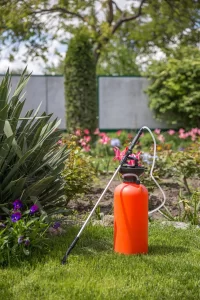
Portulaca varieties are relatively resistant to pests and diseases, but occasional issues may arise. Common pests that may affect Portulaca include aphids, spider mites, and slugs. Regularly inspect your plants for any signs of infestation, such as distorted growth or webbing. If pests are present, use natural remedies or insecticidal soap to control their population effectively. Portulaca is generally resistant to most diseases, but excessive moisture or poor air circulation can lead to fungal infections. To prevent such issues, ensure proper drainage and allow adequate space between plants. By practicing proactive pest and disease control, you’ll safeguard your colorful balcony garden and enjoy its beauty to the fullest.
Portulaca Companions: Pairing with Other Balcony-Friendly Plants
Pairing Portulaca with other balcony-friendly plants can create a harmonious and visually appealing garden display. Consider combining Portulaca with flowering companions such as petunias, marigolds, or verbena to create a vibrant burst of colors. For a textured and dynamic arrangement, mix Portulaca with ornamental grasses or cascading plants like sweet potato vines. The contrasting colors and varied growth habits of these companion plants will add depth and visual interest to your balcony garden. Be mindful of their sunlight and water requirements to ensure a successful and cohesive partnership. By choosing Portulaca companions wisely, you’ll design a picturesque and flourishing garden space on your balcony.
Extending the Blooms: Strategies for a Year-Round Colorful Balcony
While Portulaca varieties are known for their abundant and long-lasting blooms during the warm months, with proper care and strategic planning, you can extend their flowering season and enjoy a year-round colorful balcony. One approach is to choose a mix of early, mid, and late-blooming Portulaca varieties. This way, you’ll have continuous blooms throughout the growing season. Additionally, deadheading spent flowers regularly will encourage new flower production and extend the blooming period. Consider incorporating other flowering plants with different flowering times to complement your Portulaca varieties. By implementing these strategies, you’ll create a balcony garden that remains vibrant and colorful throughout the year.
Weathering Seasonal Changes: Preparing Portulaca for Transitions

As the seasons change, your Portulaca garden will experience different weather conditions, requiring appropriate care and preparation for smooth transitions. Before the arrival of cooler temperatures, monitor weather forecasts to anticipate frosts or cold snaps. If frost is expected, move your Portulaca pots indoors or provide protective covering to prevent damage. During the winter months, reduce watering and allow the plants to enter a dormant phase. Once spring arrives, gradually increase watering and fertilization to support new growth and flowering. Understanding and catering to these seasonal transitions will help your Portulaca varieties thrive through changing weather conditions and ensure their continued beauty on your balcony.
Vertical Beauty: Utilizing Space Creatively with Hanging Portulaca
Utilizing vertical space creatively with hanging Portulaca is an excellent way to maximize the visual impact of your balcony garden. Hanging baskets filled with trailing Portulaca varieties create an enchanting and dynamic display, adding a touch of elegance to any outdoor space. When selecting hanging baskets, opt for lightweight and durable materials that can support the weight of the plants and soil. Ensure the baskets have drainage holes to prevent waterlogging and root rot. Place the hanging baskets strategically to take advantage of sunlight exposure and create a cascading effect. By embracing vertical gardening with hanging Portulaca, you’ll infuse your balcony with a captivating and unique charm.
Designing a Portulaca Paradise: Creative Ideas for Your Balcony Oasis
Crafting an enchanting Portulaca paradise on your balcony involves thoughtful design and creative ideas. Consider arranging Portulaca pots in clusters of varying heights and colors to create a visually appealing composition. Add decorative elements like pebbles or decorative stones around the pots to enhance the overall look. Incorporate pathways or stepping stones to navigate your balcony garden easily. Utilize vertical space with hanging Portulaca or trellises for an enchanting touch. Integrate seating or cozy corners amidst the Portulaca to enjoy the serene atmosphere of your balcony oasis. By drawing inspiration from various design ideas, you’ll transform your balcony into a captivating and colorful haven with Portulaca at its heart.
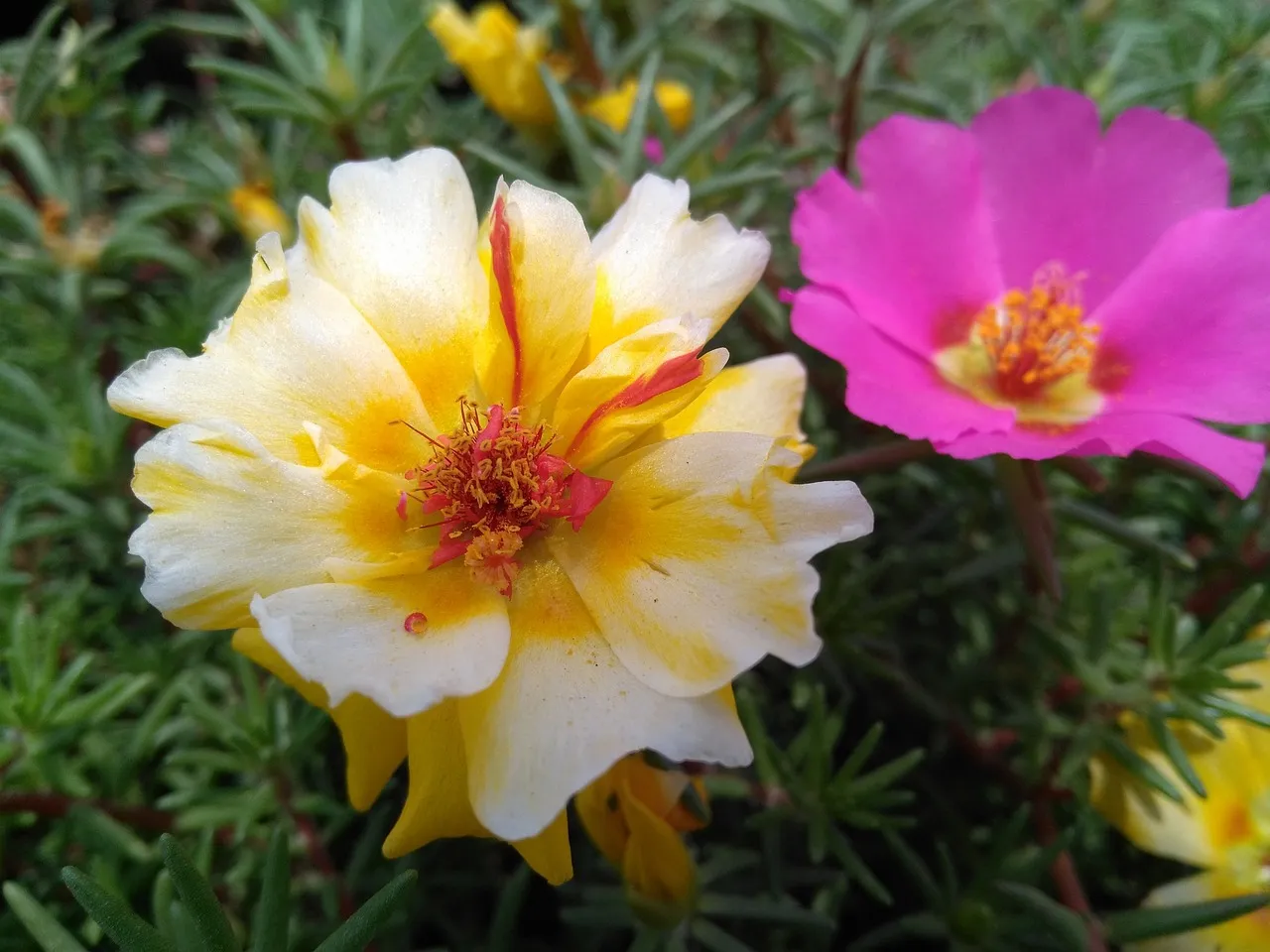
Conclusion
In conclusion, designing a Portulaca garden for your balcony opens up a world of possibilities to create a vibrant and enchanting outdoor space. With a diverse range of colorful Portulaca varieties to choose from, you can curate a captivating display that brings joy and beauty to your daily life. The key to success lies in selecting the perfect pots that suit your balcony’s aesthetics and provide optimal growing conditions. Proper planting, watering, and feeding ensure healthy growth and continuous blooming, while pruning and pest control safeguard the well-being of your Portulaca garden.
By embracing creative ideas, such as vertical gardening with hanging Portulaca and designing cozy corners for relaxation, you’ll transform your balcony into a lush oasis of colors and textures. The low-maintenance nature of Portulaca makes it an excellent choice for busy gardeners or beginners, as it requires minimal care while still offering abundant rewards. With careful consideration of seasonal transitions, you can enjoy year-round blooms and vibrant displays on your balcony. So, unleash your creativity, let the charm of Portulaca varieties dazzle you, and create a stunning Portulaca garden that will be the envy of all who visit your balcony sanctuary.
Most Frequently Asked Questions on Portulaca
What are the different Portulaca varieties suitable for balcony gardens?
Portulaca grandiflora, Portulaca oleracea, Portulaca umbraticola, and Portulaca pilosa are popular choices for balcony gardens. Each variety offers unique characteristics, such as vibrant colors, trailing growth, and edible leaves, making them perfect for balcony displays.
How much sunlight does Portulaca need to thrive on a balcony?
Portulaca varieties love full sunlight, requiring at least six to eight hours of direct sun each day. Placing them in a sunny spot on your balcony ensures robust growth and abundant blooming.
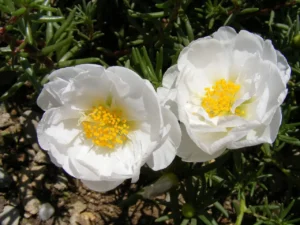
Are Portulaca plants easy to care for, especially for busy gardeners?
Yes, Portulaca is low-maintenance and drought-tolerant, making it ideal for busy gardeners or those new to gardening. With minimal care, they can flourish beautifully on your balcony.
Can Portulaca be grown in containers or hanging baskets on a balcony?
Absolutely! Portulaca varieties are well-suited for container gardening. Their trailing growth habit makes them perfect for hanging baskets, adding a vibrant touch to your balcony garden.
How often should I water Portulaca plants on my balcony?
Water your Portulaca when the top inch of soil feels dry. Depending on weather conditions, this may require watering every 2-3 days during hot summer months. Be cautious not to overwater.
What type of potting mix is best for growing Portulaca in containers?
Use a well-draining potting mix with good aeration and moisture retention. Avoid heavy soils that retain water, as Portulaca prefers well-draining conditions.
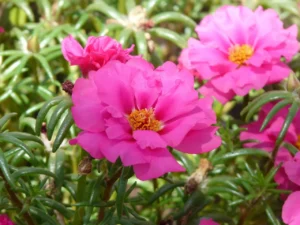
Can I grow Portulaca from seeds, or is it better to buy established plants?
Both methods are possible, but growing from seeds can be challenging. Purchasing young, healthy Portulaca plants from nurseries is an easier and quicker option.
How can I encourage Portulaca to bloom continuously on my balcony?
Regular deadheading, removing faded flowers, stimulates new blooms. Ensure adequate sunlight, proper watering, and feeding with a balanced fertilizer to support continuous flowering.
Are there any companion plants that go well with Portulaca on a balcony?
Portulaca pairs beautifully with other sun-loving plants like petunias, marigolds, and verbena. Consider complementary colors and growth habits for a harmonious balcony display.
Can Portulaca be overwintered for the next season on a balcony?
Portulaca is typically treated as an annual, as it is sensitive to frost and cold temperatures. However, in milder regions, you can attempt to overwinter it indoors or protect it from extreme cold.
What are some creative ideas for designing a Portulaca garden on my balcony?
Designing a Portulaca paradise involves arranging pots in clusters, using hanging baskets, incorporating decorative elements like pebbles, and creating cozy corners for relaxation.
How do I safeguard my Portulaca garden from pests and diseases on the balcony?
Ensure you inspect your plants for pests like aphids or spider mites regularly. Control them with natural remedies or insecticidal soap effectively. One has to take care in all ways to have good air circulation to prevent fungal issues.
Can I use vertical gardening with hanging Portulaca on my balcony?
Absolutely! Hanging baskets filled with trailing Portulaca add a dynamic and enchanting element to your balcony garden, utilizing vertical space creatively.

How can I extend the blooming season of Portulaca on my balcony?
Select a mix of early, mid, and late-blooming Portulaca varieties for continuous flowers. Deadhead spent blooms regularly and pair with other plants with different flowering times.
Are there any considerations for weathering seasonal changes with Portulaca on a balcony?
Protect Portulaca from frost or cold temperatures during winter. Reduce watering and allow plants to enter a dormant phase. Gradually increase care and fertilization in the spring.
#BalconyGarden #PortulacaVarieties #ColorfulRetreat
